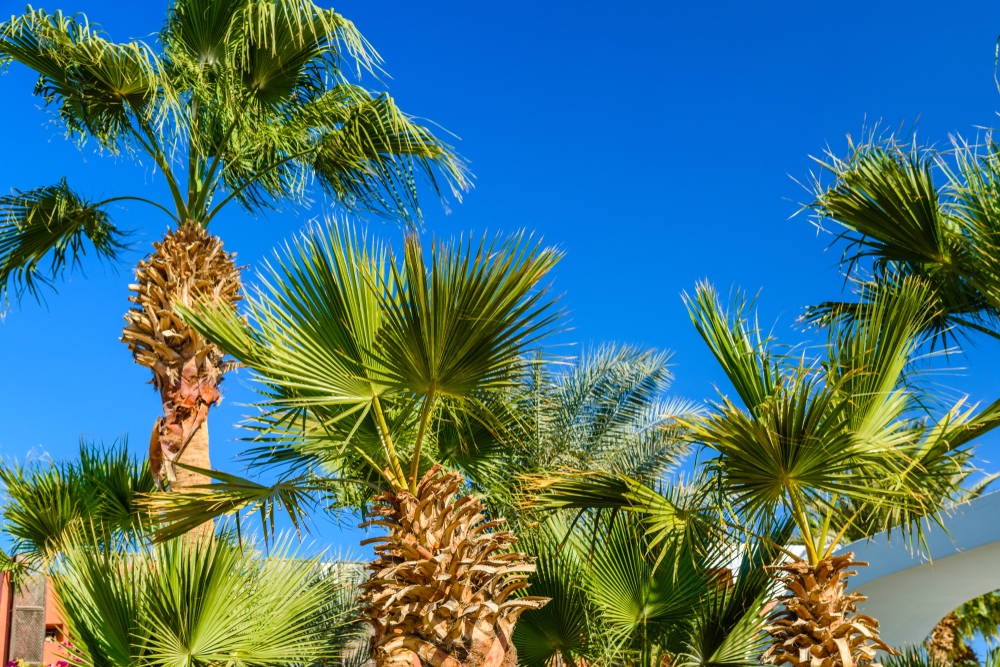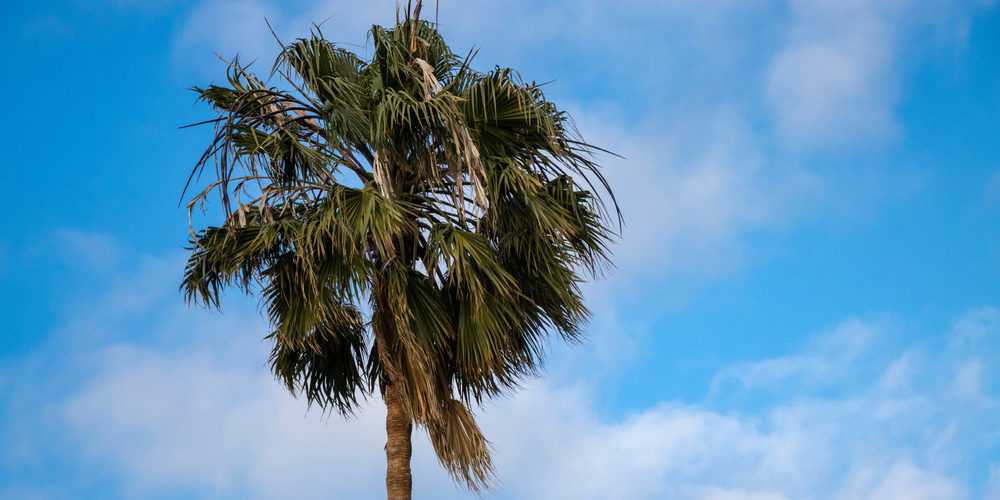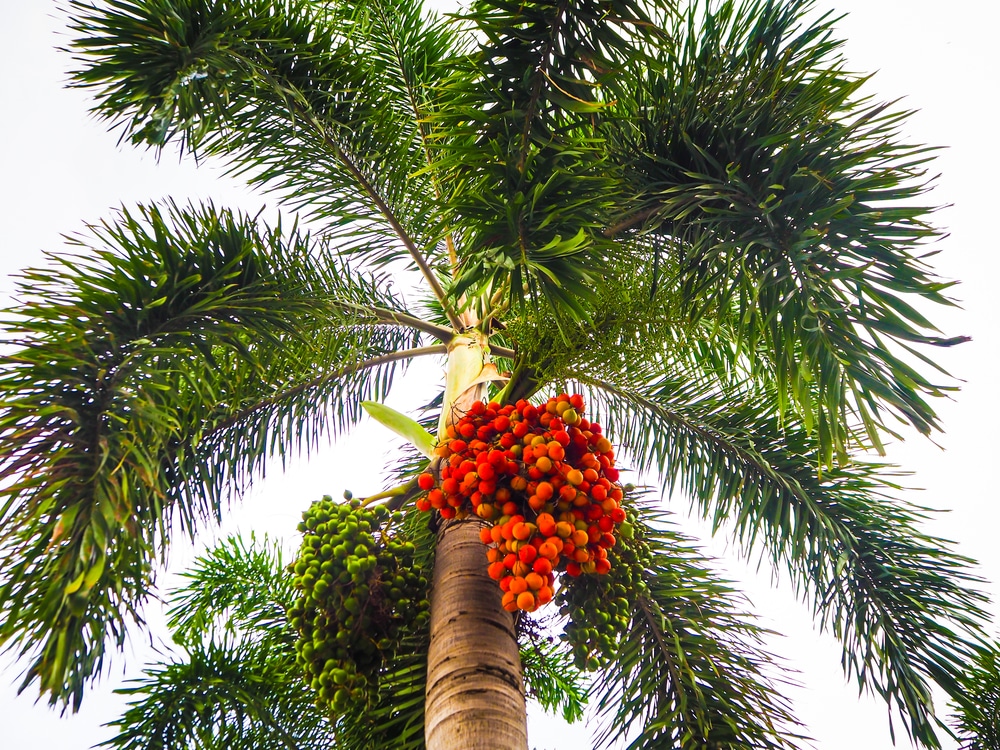Palm trees are known for their beauty and tropical vibe exuding an air of paradise, making any place feel like a vacation destination. The vibrant green leaves are long and broad, representing victory are said to be the symbol of Nike, the Greek goddess of victory. However, it can be quite concerning when palm tree leaves start turning white.
There are several different causes why your palm trees are turning white. Too much sun, pests, diseases, or simply watering with hard water could all be to blame. Let’s take a closer look at each of these possibilities.
Palm Tree Growing Conditions
Palm trees, in addition to their function as landscape trees in warmer regions, may also be beautiful and interesting indoor plants. The first thing to note about these plants is their large evergreen fronds, which are arrayed at the top of an unbranched stem.
They are tropical plants but prefer only partial shade or bright indirect light. It is ideal to plant it in moist, neutral to acidic, and well-drained soil with a pH of 6.0 to 8.0. Palm trees are prone to potassium deficiency so feeding them with fertilizer containing micronutrients and extra potassium will ensure they stay healthy.
Possible Causes Why Palm Trees Turn White
The lush green leaves of palm trees scream tropical paradise, but it can be quite alarming when they turn white. While there could be several reasons for this color change, here are some of the most common causes:
Too Much Sun
If your palm tree is getting too much sun, the leaves will start to turn yellow and then eventually white. While palm trees do need some sun to grow but they can’t handle too much direct sunlight and prefers partial shade instead.
Watering with Hard Tap Water
Because the high concentration of minerals in hard water can build up on the leaves, it can cause a white film to form. Lime or calcium build-ups are especially common in areas with hard water.
Improper Fertilization
Not feeding your palm tree the right nutrients can also cause the leaves to turn white. Potassium is an essential nutrient for palm trees, so make sure you are using a fertilizer that is specifically designed for palm trees and that has a high potassium content.
Poor Drainage
If the soil around your palm tree doesn’t drain well, it can cause the roots to rot. Just because palm trees are tropical plants doesn’t mean they like sitting in water.
Pest Infestation
Another possible reason why your palm tree’s leaves are turning white could be due to pests. Aphids, mealybugs, and scale insects are all common culprits that feed on palm trees. These pests can stress your tree and can also introduce diseases.
How to Avoid This From Occurring
It is important to identify the cause of why your palm tree is turning white in order to properly address the issue and prevent it from happening again in the future.
Move It to a Spot with Partial Shade
If you think too much sun is to blame, try moving your palm tree to a spot that gets partial shade instead. Just like any other plant, too much sun can be damaging and cause the leaves to change color.
Water It With Filtered Water
If you have hard water, try watering your palm tree with filtered water instead. This will help to remove any unwanted minerals that could be building up on the leaves. You can also use rainwater if you have a way to collect it.
Fertilize It With the Right Nutrients
As mentioned before, potassium is an essential nutrient for palm trees. Make sure to feed your palm tree with a potassium-rich fertilizer on a regular basis to ensure its healthy growth.
Check and Improve the Soil Drainage
The soil around your palm tree should drain well in order to avoid root rot. If you think poor drainage is an issue, try adding some organic matter to the soil to help with drainage. You can also make sure the tree is planted in an area that drains well.
Check for Pests and Diseases Regularly
In order to prevent pests and diseases from taking over, it is important to inspect your palm tree regularly. If you see any signs of pests or disease, treat them immediately.
Why Do the Leaves on My Palm Tree Have White Spots
Aside from the leaves turning completely white, white spots appearing could also be a sign of a problem. Here are some possible causes:
Fungal Infection
One of the most common reasons for white spots on palm trees is a fungal infection known as the Graphiola leaf spot. Although this is harmless and not deadly to your palm tree, it might be annoying to see and can affect the tree’s aesthetic.
Scale Infestation
Scale insects are small, hard-shelled creatures that attach themselves to the leaves of plants and feed on the sap leaving white spots. These insects can slowly kill your palm as they suck out the nutrients.
To deal with scale infestation, you can use an insecticide specifically designed to kill scale. Spray it directly on the leaves and make sure to follow the instructions on the label.
Lime Deposits
Lime deposits are usually the result of hard water and can leave white spots on the leaves if it has not completely turned white yet. They do not cause any harm to your plant but they can definitely be an eye sore. To remove these deposits, you can wipe them off with a soft cloth. You can prevent this from happening again by using filtered water or rainwater to water your palm tree.
Palm Tree Leaves Turning White: Final Thoughts
There are a few possible reasons why your palm tree’s leaves might be turning white or have white spots. Though it’s normal for some species to experience this, it could also be a way for your palm tree to show that it is in distress.
Many states have palm trees so it’s critical to figure out what caused the issue in the first place to properly address the problem. You can also take some preventive measures to ensure that your palm tree stays healthy and strong.


